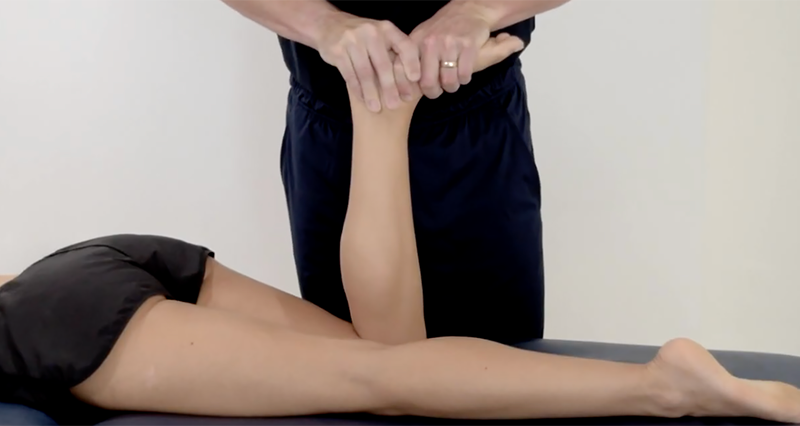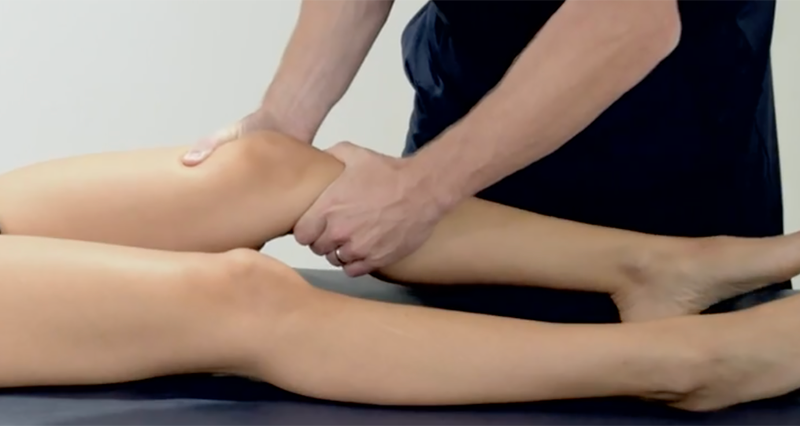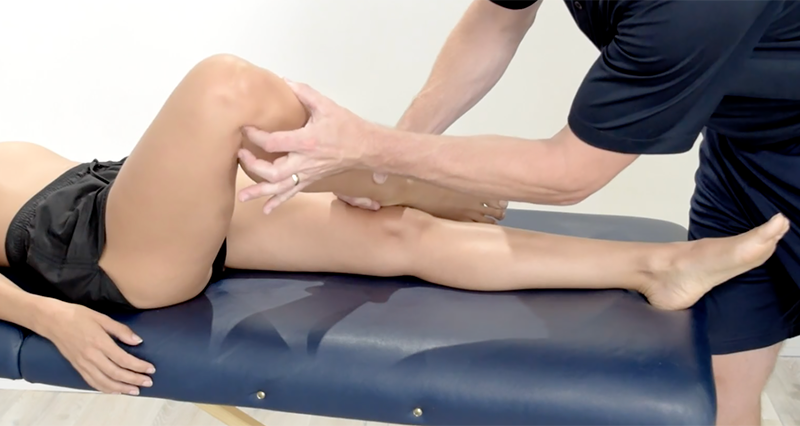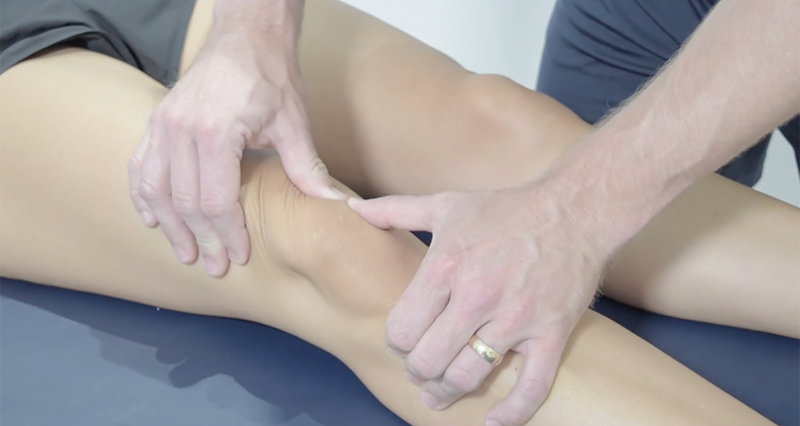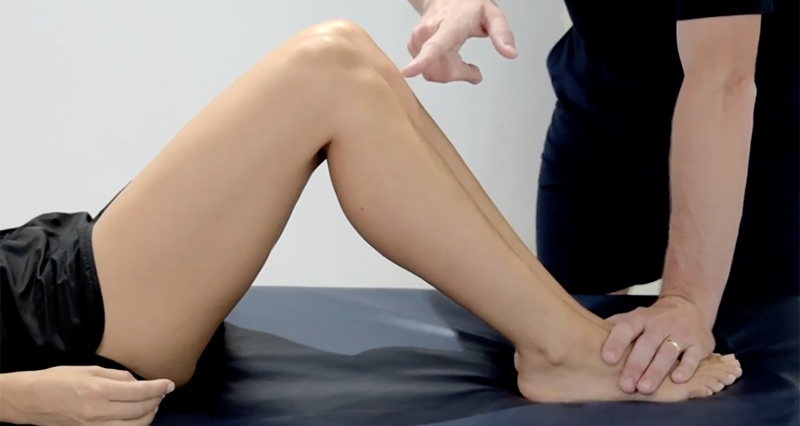The Skyline test assesses the integrity of the posterior cruciate ligament (PCL) in the knee joint.
How to perform the Skyline test for PCL sprain
Position the patient supine (on their back) on the examination table. Flex the patient’s knees to approximately 90 degrees. Then look to see if the tibia drops compared with the uninjured knee.
If the tibia (shin bone) drops relative to the femur (thigh bone) when compared with the uninjured leg, then the test is positive. As a result, suggests possible laxity or injury to the posterior cruciate ligament (PCL). It’s important to compare the amount of posterior translation to the uninjured or contralateral knee to assess for any asymmetry.
The skyline test is particularly useful for assessing the integrity of the PCL, one of the major ligaments stabilizing the knee joint. A positive skyline test result may indicate the need for further evaluation with imaging studies, such as MRI, to confirm the diagnosis and assess the severity of the PCL injury.

A torn PCL is a rupture (sprain) of the posterior cruciate ligament in the knee joint. One cause is an impact to the front of the knee which causes your knee joint to bend back the wrong way.
